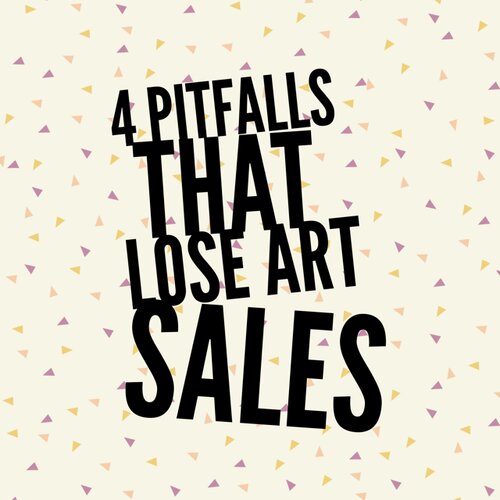by Carolyn Edlund
As an artist, you’re looking to make more sales. Avoid these four communication mistakes that can cause you to lose them instead.

Growing a successful business selling art is a commitment, and it’s not easy. It takes persistence and an understanding of how and why people buy. The more you learn about marketing and sales strategies, the more ways you can attract, cultivate and sell your art to customers. That also means knowing how prospective customers can fall through the cracks, losing the sale. Have any of these happened to you?
Potential customers don’t “get” what you do.
Whether you are selling at a live event such as an art fair or festival or sharing your work on social media or your website, you have literally seconds to catch people’s attention and draw them in. State clearly what you do, up front. This could be through signage, branding, prominent headers or a tagline that grabs the visitor’s attention.
People tend to do what is easiest. If your presentation acts as a magnet, they get pulled in. But if it’s incomplete or confusing, they leave. Consider whether an explanation is needed. Does your website tell clearly what you do, perhaps with a tagline on your Home page, or even through your domain name? Do you visually engage them with enticing images and welcoming language? If not, rethink your presentation to make it easy to understand and engage with your work.
You’ve failed to understand and meet their needs.
What do people care about most? Themselves. Your job when selling is to engage the customer and learn what is important to them and what they value. Listen carefully to absorb what they have to say, and use what you learn to frame how your work has benefits for them. This is a consultative selling technique. When you sell consultatively, you pay particular attention to the individual in order to meet their needs in the best way possible.
When you can elucidate reasons why your art is a good fit or a solution for that person, you have a better chance to close the sale. If not, you may be leaving sales on the table.
Lack of follow up.
The truth is that shoppers rarely buy the very first time they see your work. It typically requires multiple exposures before most people even remember you. And, they will buy when they are ready, but not before. That means if you meet someone who is interested, or if you get an email from a website visitor who subscribes, you must take action to stay in contact.
Failure to follow up is one of the most common reasons that sales are not made. If this is a problem for you, make note of it and create a plan to schedule follow ups on a regular basis.
Inability to negotiate.
When you calculate your prices, do you leave buffer room to offer any special pricing or services? If a collector wants to purchase several pieces of your work, can you afford to offer a 10% discount? Would you be able to give free shipping to an out of town customer if it made the difference in closing the sale? Are you willing to deliver and install your work in a local customer’s home? Do you drop ship, or gift wrap your work?
Every time you can accommodate a customer in a special way, you can overcome objections to the sale. You may end up with a long-time collector and a source for great testimonials, too. But if you haven’t planned ahead for ways to offer extra value or services, you could lose out.


Speak Your Mind